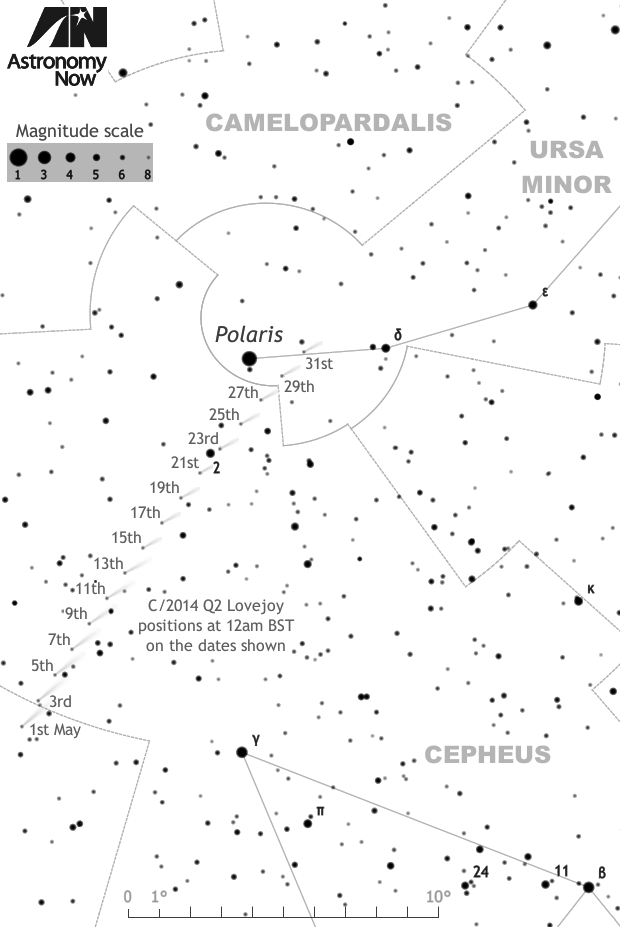This article is now outdated. Please follow this link for updated viewing information. 
Currently hovering around magnitude +8, the comet’s still brighter than initial predictions and a comfortable binocular object under moonless skies. In the last week of May, dusk twilight has faded sufficiently by midnight for the centre of the British Isles to see Comet Lovejoy in an almost dark sky (the Moon notwithstanding).
At the fall of night, C/2014 Q2 is ~50° above the northern horizon in the British Isles. In the last week of May, Comet Lovejoy is so close to the north celestial pole that it merely describes a small circle around it, permitting observers with non-motorised telescopes such as Dobsonians and instruments on alt-azimuth mounts to easily find and observe it in the same field as Polaris at magnifications of 40x or less, appearing almost stationary in the eyepiece.
Despite the gibbous Moon (try to find an observing location shielded from its glare) and astronomical twilight all night for much of the British Isles, it is worth attempting to photograph Comet Lovejoy’s close approach to Polaris with a tripod-mounted DSLR and a telephoto lens close to 1 am BST. Point the lens at Polaris with the camera focused at infinity and try bracketing ISO800-1600 exposures of 20-60 seconds at f/4; experiment to find the best setting that isn’t washed-out by moonlight and twilight.
Observers using GoTo telescopes or instruments equipped with digital setting circles can use the following nightly equatorial coordinates to find Comet Lovejoy quickly:
3rd June at 11 pm BST — α = 15h 38.4m δ = +87°26′ (J2000.0)
Inside the magazine
You can find out more about Comet Lovejoy in the May edition of Astronomy Now in addition to a full observing guide to the night sky.
Never miss an issue by subscribing to the UK’s biggest astronomy magazine. Also available for iPad/iPhone and Android devices.




